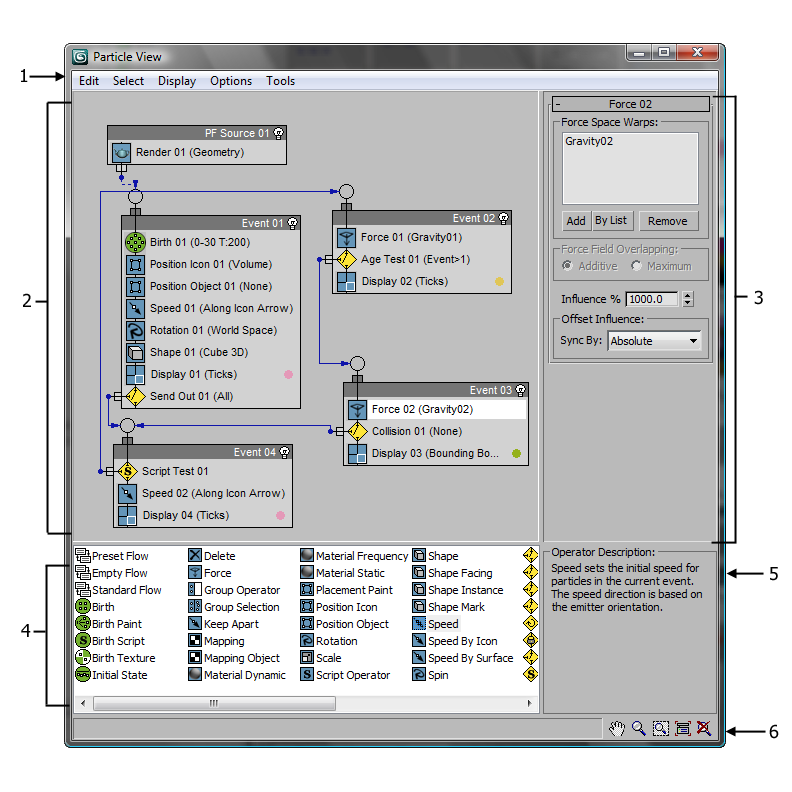Particle View provides the main user interface for creating and modifying particle systems in Particle Flow. The main window, known as the event display, contains the particle diagram, which describes the particle system. A particle system consists of one or more events wired together, each of which contains a list of one or more operators and tests . Operators and tests are known collectively as actions.
The first event is called the global event, because any operators it contains can affect the entire particle system. The global event always has the same name as the Particle Flow icon; by default, this is PF Source ## (starting with 01 and counting upward). Following this is the birth event, which must contain a Birth operator if the system is to generate particles. By default, the birth event contains this operator as well as several others that define the system's initial properties. You can add any number of subsequent events to a particle system; collectively, the birth event and additional events are called local events. They're called this because a local event's actions typically affect only particles currently in the event.
You use tests to determine when particles are eligible to leave the current event and enter a different one. To indicate where they should go next, you wire the test to another event. This wiring defines the schematic, or flow, of the particle system.
By default, the name of each operator and test in an event is followed by its most important setting or settings in parentheses. Above the event display is a menu bar, and below is the depot, containing all actions available for use in the particle system, as well as a selection of default particle systems.

1. Menu bar
2. Event display
3. Parameters panel
4. Depot
5. Description panel
6. Display tools
Particle View comprises the following elements:
To toggle display of the parameters panel, choose Display menu  Parameters.
Parameters.
The contents of the depot fall into three categories: operators, tests, and flows.
To toggle display of the description panel, choose Display menu  Description.
Description.
The menu bar provides access to a number of important Particle View functions.
The event display in Particle View contains the particle diagram, and provides a complete range of intuitive functions for editing the particle system.
The event display right-click menu provides handy access to a number of contextual commands. The contents of the menu, as well as the results of its commands, depend in some cases on where you click, in other cases on what's highlighted, and in still other cases, on both.